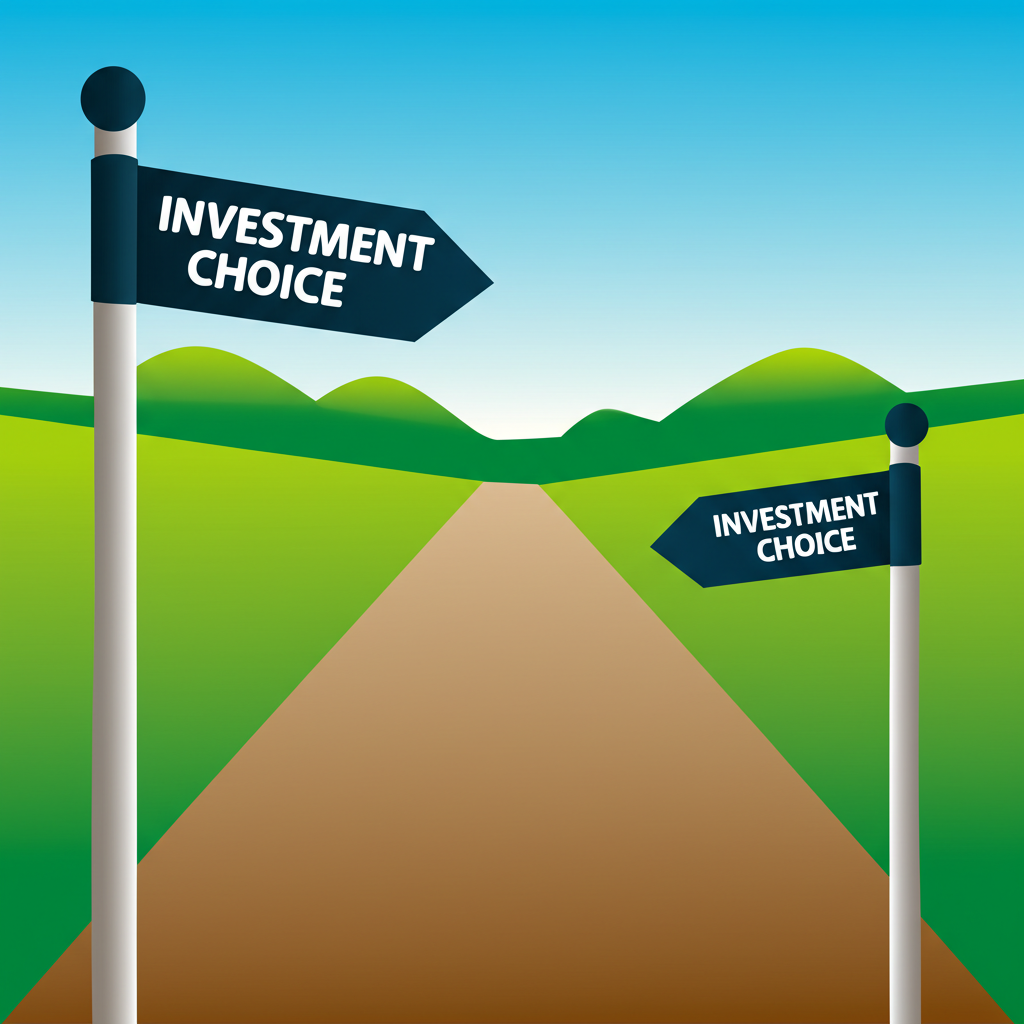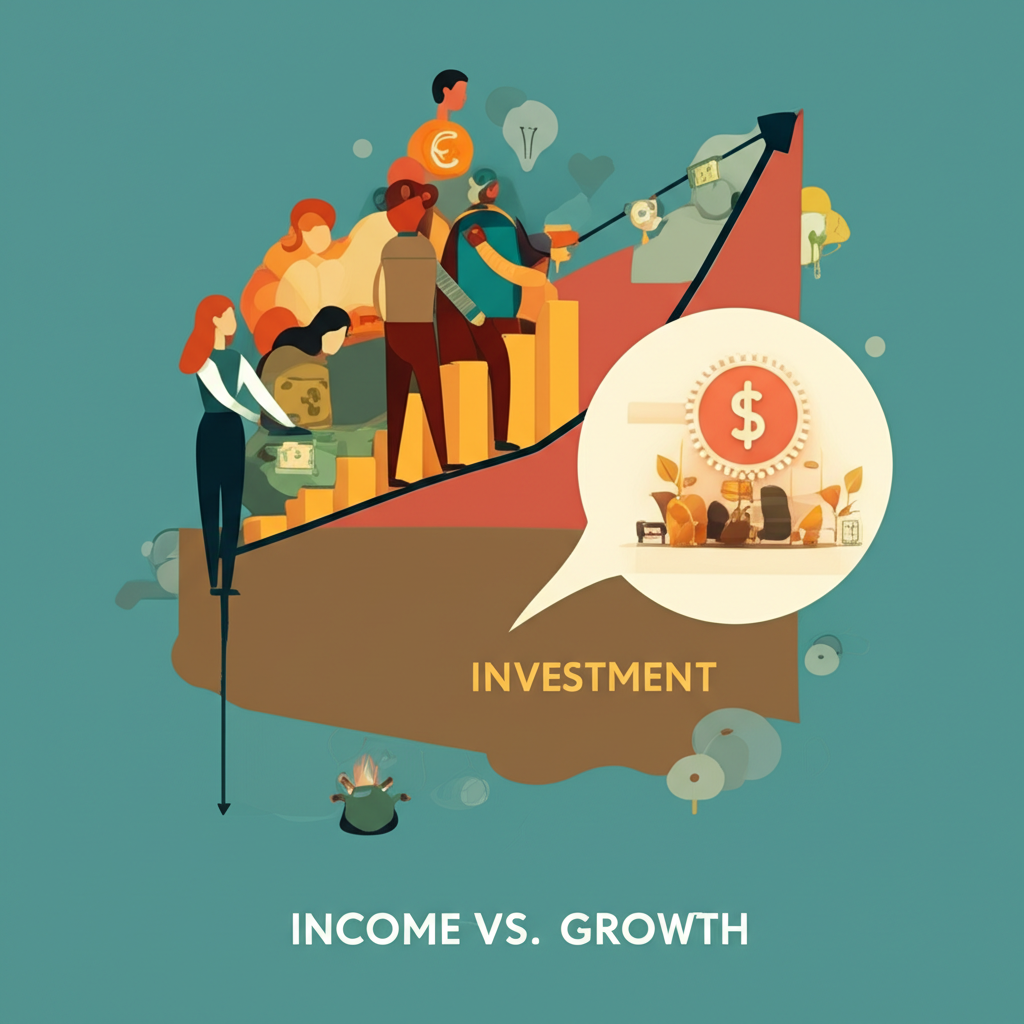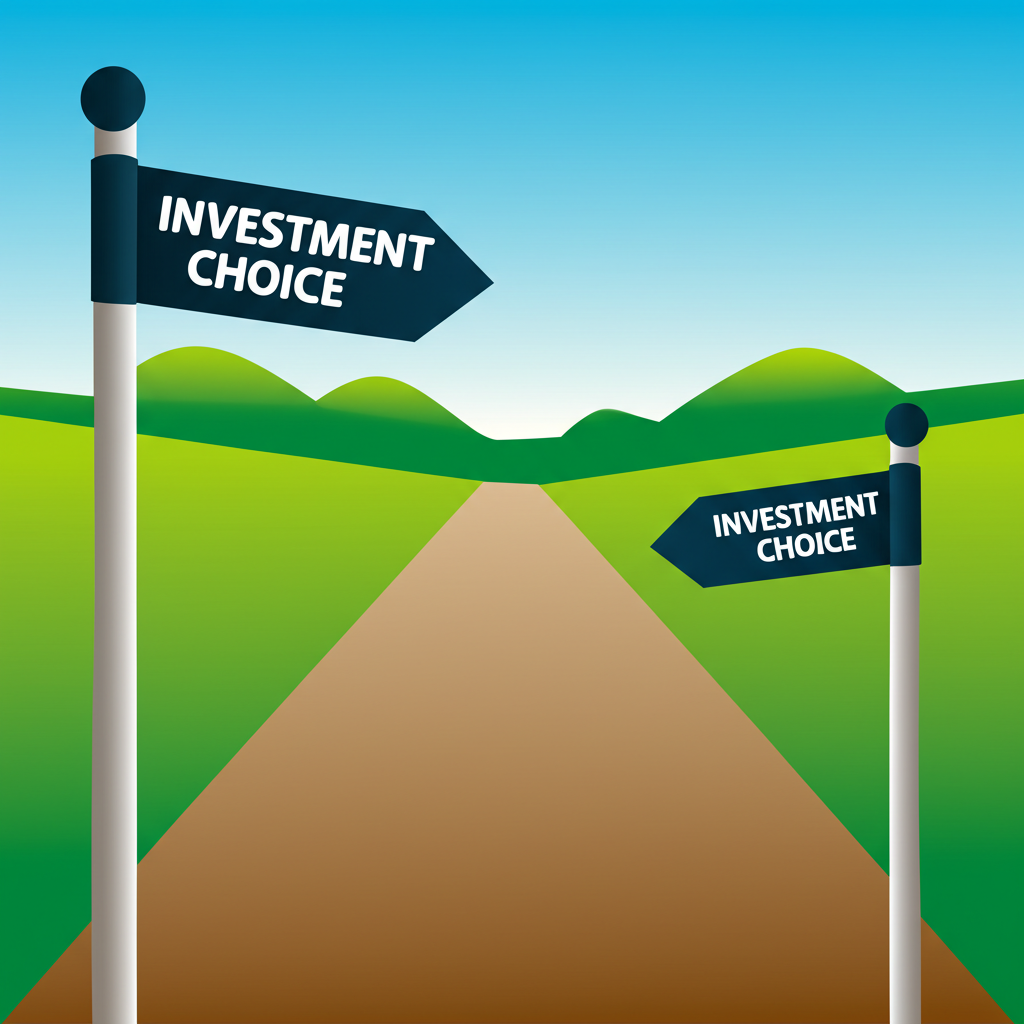Introduction: Charting Your Investment Course in the US for 2025
Looking toward 2025, investors across the United States must decide how to best position their money for building lasting wealth. The two main options that stand out are dividend stocks and growth stocks. Dividend stocks deliver steady payouts from company profits, while growth stocks aim for rapid value increases through reinvestment. Each style fits different needs, from varying levels of risk acceptance to distinct timelines for returns. By grasping these contrasts, US investors can better tailor their holdings to the ever-shifting domestic market. In this detailed overview, we’ll break down both methods, weigh their features, examine key tax considerations specific to the US, and guide you toward the strategy-or mix-that matches your goals for 2025 and the years ahead.

These choices aren’t one-size-fits-all; they depend on factors like your current age, income needs, and comfort with market ups and downs. For instance, someone nearing retirement might lean toward reliable income sources, whereas a younger professional could chase higher potential rewards despite the bumps along the way.

Understanding Dividend Stocks: Income Generation in the United States
Dividend stocks are shares in firms that share a slice of their earnings directly with owners through regular cash dividends. For folks investing in the US, this setup creates a dependable flow of money, which proves especially useful for specific aims like supplementing retirement funds.
These companies usually reach this point after years of operation, boasting reliable profits and a solid history of success. They thrive in industries where expansion happens at a measured pace, freeing up extra funds to pass along to investors instead of pouring everything into bold new ventures. Such a commitment to rewarding shareholders often points to a sound financial foundation.
What draws many American investors to dividends is the predictable cash they bring in-whether for covering daily costs, buying more shares to grow holdings over time, or acting as a buffer against surprises. This method suits people who value security and ongoing revenue from their portfolio.
Common areas for solid dividend payers in the US include utilities like power and natural gas providers, consumer staples such as food producers and drink makers, and financial services encompassing banks and insurers. These fields generally weather economic storms better, keeping their payouts steady even when times get tough.
Advantages of Dividend Stocks for US Investors
American investors find several strong reasons to consider dividend stocks:
- Steady Income Stream: Regular payouts deliver cash on a schedule, serving as essential support for retirees or anyone building passive revenue.
- Potential for Reinvestment: You can channel those dividends back into additional shares, harnessing the power of compounding to speed up overall gains-a process facilitated by dividend reinvestment plans, or DRIPs.
- Reduced Volatility: Established dividend issuers tend to experience less dramatic price swings than fast-scaling outfits, providing calmer sailing amid market turbulence.
- Sign of Financial Health: Ongoing dividends reflect a business’s strong cash position and operational reliability.
- Inflation Hedge: As dividends rise, they can counteract the steady creep of higher prices, preserving your buying power.
Disadvantages of Dividend Stocks in the US Context
That said, dividend stocks aren’t without challenges for US-based investors:
- Slower Growth Potential: When a company sends out a large share of profits as dividends, it leaves less for fueling rapid expansion, which might mean more modest increases in share value.
- Tax Implications: In the US, dividends count as taxable income right away, with rates varying based on whether they’re qualified or not. This ongoing tax hit can eat into net results.
- Susceptibility to Interest Rate Changes: When rates climb, high-yield dividend options may lose shine next to bonds or other fixed-income choices that promise similar returns with less uncertainty.
- “Dividend Traps”: An eye-catching yield could mask deeper issues; if the stock drops sharply, the yield spikes artificially, but the firm might slash or scrap the dividend, hitting your principal hard.
Understanding Growth Stocks: Capital Appreciation in the United States
Growth stocks belong to businesses projected to outpace the broader market in expansion. Rather than handing out dividends, these firms plow earnings back into operations to support scaling up, innovation, and deeper market reach.
Standout traits of growth-oriented companies often include fresh ideas, promising profit trajectories, and a presence in fast-changing fields. Their emphasis stays on grabbing bigger slices of the market, launching breakthrough products, or shaking up established players. This forward-focused tactic targets major boosts in share prices for those who hold on.
For US investors, the big lure of growth stocks is the chance for hefty gains in value. You purchase them betting on a sharp rise in worth, reaping rewards upon sale. This fits those eager to push their investments harder, accepting elevated risks for the payoff.
Prime US sectors for growth include tech realms like software and chip manufacturing, biotech areas focused on drug discovery, and clean energy initiatives. These arenas drive progress and often carry premium prices thanks to bright outlooks.
Advantages of Growth Stocks for US Investors
Growth stocks present dynamic prospects for Americans in the market:
- High Capital Appreciation Potential: The core appeal is the shot at dramatic price surges, translating to impressive profits down the line.
- Alignment with Innovation: Backing these means supporting trailblazers in tech and beyond, positioning you at the heart of change.
- Strong Performers in Bull Markets: They shine brightest when the economy hums and optimism rules, riding waves of enthusiasm.
- Tax Efficiency (Deferring Capital Gains): Taxes only kick in upon selling, letting gains build untouched and compound longer before any IRS bite.
Disadvantages of Growth Stocks in the US Context
Still, growth stocks bring real hazards for US participants:
- Higher Volatility and Risk: These ventures carry more speculation, with prices reacting sharply to mood shifts, recessions, or rivals’ moves, causing wild rides.
- No Regular Income: Full reinvestment means no dividend checks, so they’re a poor fit if you count on steady draws from your assets.
- Often High Valuations: Elevated price-to-earnings multiples bake in big expectations; misses can trigger steep declines.
- Sensitivity to Economic Downturns and Interest Rate Hikes: Expansion depends on cheap funding, so spiking interest rates raise costs, curbing growth and dimming future appeal.
Dividend Stocks vs. Growth Stocks: A Head-to-Head Comparison for US Investors in 2025
US investors benefit from stacking these strategies side by side to clarify choices. The gaps go further than payouts versus price jumps, influencing everything from hazard levels to business traits and tax setups.
| Characteristic | Dividend Stocks | Growth Stocks |
|---|---|---|
| Primary Investment Goal | Income Generation, Stability | Capital Appreciation, High Returns |
| Typical Company Profile | Mature, Stable, Established Market Share | Emerging, Innovative, High Growth Potential |
| Risk Level | Generally Lower | Generally Higher |
| Volatility | Typically Lower | Typically Higher |
| Reinvestment Strategy | Company distributes profits; investor can reinvest dividends | Company reinvests most/all profits for expansion |
| Tax Implications (US) | Taxed on qualified/non-qualified dividends (annual) | Taxed on capital gains when shares are sold (can be deferred) |
| Market Sensitivity | More sensitive to interest rates | More sensitive to economic cycles, investor sentiment |
| Valuation Metrics | Often lower P/E, higher dividend yield | Often higher P/E, lower/no dividend yield |
US Tax Implications: A Critical Factor for Dividend and Growth Stock Investors (2025)
Taxes play a pivotal role in shaping net outcomes for US investors in either category. Grasping how dividends and gains get treated helps maximize what you keep.
- Qualified vs. Non-Qualified Dividends: US rules split dividends into qualified and non-qualified types. Qualified ones enjoy lower long-term capital gains rates, beating standard income taxes in most cases. Qualification demands come from US or eligible foreign firms, plus a holding period requirement. Ordinary dividends face your regular tax bracket. These rules shape yearly tax bills, so tracking them matters for planning.
- Short-term vs. Long-term Capital Gains Taxes: Profits from sales trigger capital gains taxes. Short-term (under a year) matches income rates; long-term (over a year) gets preferential treatment, akin to qualified dividends. This encourages longer holds for growth plays. The IRS updates rates yearly-check Tax Topic 409 for the latest details.
- The Impact of Tax-Advantaged Accounts: Using vehicles like 401(k)s, Traditional IRAs, or Roth IRAs changes the game for both approaches.
- Traditional IRA or 401(k) lets dividends and gains grow without taxes until retirement draws.
- Roth versions mean qualified retirement pulls are tax-free, shielding all earnings if rules are followed. These shine for uninterrupted compounding, dodging yearly tax drags.
- Importance of Consulting a US Tax Professional: With US tax rules’ twists-particularly any 2025 shifts-talking to a certified tax expert is wise. They’ll customize advice to your setup and craft tax-smart moves.
Who Should Invest in What? Matching Strategies to US Investor Profiles (2025)
No strategy suits everyone; alignment with your aims, risk appetite, and timeline is essential when picking between dividends, growth, or a mix.
- For Dividend Stocks: Retirees needing steady checks or cautious types valuing preservation over speed often turn here. It’s also great for long-haul builders wanting reliable gains and inflation protection.
- For Growth Stocks: Younger folks with decades ahead can weather storms and capture compounding magic. Bold investors okay with volatility, focused on peak growth, thrive with this.
- For a Balanced Approach: Smart US portfolios blend both via a core-satellite model: dividend stability as the base, growth upside as add-ons. This spreads risk and adapts to shifting conditions.
The Hybrid Approach: Exploring Dividend Growth Stocks in the US Market
US investors wanting income plus upside might prefer dividend growth stocks-firms that pay out but keep hiking those amounts year after year.
These stand out by delivering escalating payouts that beat inflation, paired with value rises from thriving operations. Consistent raisers show financial muscle, steady earnings, and shareholder focus.
To spot top ones, seek long streaks of increases-like Dividend Aristocrats (25+ years) or Kings (50+), sensible payout levels for sustainability, and solid basics. They span industrials, consumer goods, and health care.
Reinvesting rising dividends supercharges compounding: more cash leads to more shares, snowballing income and totals. This forms a strong base for enduring US wealth creation.
Choosing an Investment Platform for Dividend and Growth Stocks in the US (2025)
Picking the proper platform matters for executing dividend or growth plans in the US. Traditional brokers enable outright stock buys, but many now offer stock CFDs for betting on price shifts without owning shares. Remember, CFDs mean no actual asset control.
Below is a look at brokers providing broad global stock CFD access, ideal for US traders eyeing flexible plays in dividend and growth names:
- Moneta Markets: This platform, which holds an FCA license, stands out with tight pricing and an intuitive interface, giving US investors entry to numerous global stock CFDs. It supports bets on dividend and growth firms via adjustable leverage and solid tools. Low spreads and commissions on these trades appeal to active users in 2025 aiming to leverage movements sans ownership. Overall, it delivers efficient, accessible trading across assets.
- IG: As a tightly regulated international broker, IG equips US clients with a full-featured setup for CFDs on countless stocks, indexes, and ETFs. Advanced charts, market variety, and learning aids help scout dividend and growth chances. Its tech and research edge serves beginners and pros alike.
- OANDA: With firm oversight and clear costs, OANDA gives US users a dependable CFD hub for key US and overseas stocks. API strength and analysis options aid deep dives into fundamentals or charts for strategy building. Its transparency and quality environment suit CFD-focused investors.
Note: For US clients, these emphasize CFDs, so you’re trading price changes, not holding shares. For true ownership, consider equity giants like Fidelity, Charles Schwab, or Vanguard to build and maintain positions.
Conclusion: Crafting Your Investment Strategy for the United States in 2025
In the US market of 2025, sorting dividend stocks from growth stocks demands clarity on their core contrasts. No approach reigns supreme; success hinges on your goals, risk comfort, and outlook. Steady income, bold gains, or a smart fusion-all pave roads to prosperity.
Diversification fortifies against shocks, blending dividend reliability with growth spark for steadier results in any climate. Keep tabs on your mix, track economic signals, and loop in an advisor as life changes. Thoughtful picks and tweaks will steer you toward triumphs in America’s vibrant investing scene.
Which is best, dividend stocks or growth stocks, for a US investor in 2025?
Neither is inherently “best”; the optimal choice depends on your individual financial goals, risk tolerance, and time horizon. Dividend stocks are often preferred by income-seekers and conservative investors, while growth stocks suit those with a long-term horizon and higher risk tolerance aiming for maximum capital appreciation. Many US investors choose a diversified approach, combining both.
How much does it take to make $1,000 a month in dividends in the United States?
To make $1,000 a month ($12,000 annually) in dividends, the amount you need to invest depends on the average dividend yield of your portfolio. If your portfolio has an average dividend yield of 3%, you would need to invest approximately $400,000 ($12,000 / 0.03). If the yield is 5%, you would need $240,000 ($12,000 / 0.05). This requires significant capital and careful selection of high-quality dividend stocks.
Why doesn’t Warren Buffett prioritize high dividend stocks in his investment strategy?
Warren Buffett and Berkshire Hathaway typically prioritize companies with strong competitive advantages, excellent management, and high earnings power, regardless of whether they pay high



No responses yet